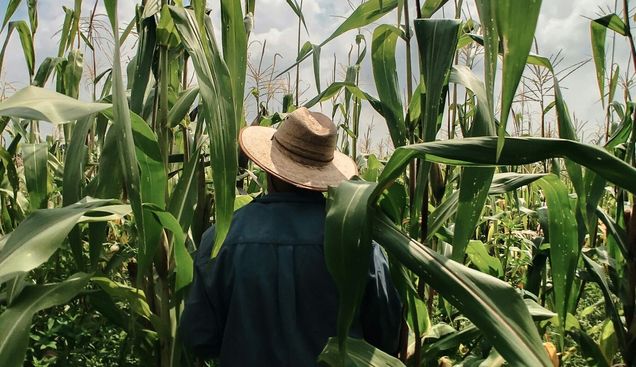Seminar Summary – The Politics of Exit: Emigration, Collective Action and Agrarian Reform in Mexico

On September 25, 2024, the Human Capital Initiative (HCI) hosted Emily Sellars from the Department of Political Science at Yale University for the first session of the Fall 2024 HCI Research Seminar Series to discuss her forthcoming book “The Politics of Exit: Emigration, Collective Action, and Agrarian Reform in Mexico.”
To assess how the presence of individual exit options, like emigration, influence citizen collective action and political change, Sellars examines historical evidence on emigration, agrarian collective action, land redistribution and government repression in Mexico from 1917-2000 and in El Salvador from the 1960s through the 1980s.
Sellars began by describing the trend of emigration as a political “exit valve,” as seen through numerous country case studies across Asia, Europe, Latin America and more. She argues that having emigration as an “exit option” can influence prospects for political change, taking pressure off governments and therefore lessening the chances that the state will implement reform. However, exit can also be a form of empowerment, as residents are able to show their dissent through “voting with their feet” and instigate political change by leaving, making this argument quite contested.
Sellars posits that the availability of exit options complicates collective action by compelling those who can leave to become less willing to invest in risky efforts to effect political change, and by lowering morale about whether community collective action can be successful, reducing everyone’s willingness to mobilize irrespective of whether they have the option to exit due to social and economic constraints. The possibility of exit shifts the costs and benefits for individuals about whether to engage in collective action, meaning that collective action rests on one’s assumptions about how others will behave. This is a vicious cycle, as reduced collective action allows authorities to avoid political change, leading even more residents to consider exiting.
The next part of the seminar discussed three periods of land reform and agrarian conflict in Mexico within the 20th century. Sellars began with the Mexican Revolution in the early 1900s, in which approximately 50 percent of Mexico’s land from large estates was transferred to peasant villages. This reform was the result of a large-scale mobilization of peasants who filed petitions to obtain the land, consequently fostering tensions between officials, elites and peasants. This was a high-risk activity for peasants, as they became targets of violence from elites as well as sanctions from officials while waiting for the status of the petition to be decided. Emigration accelerated after the Revolution up until the 1929 Stock Market Crash leading to the closing of exit options. In 1929, it appears there was more responsiveness by authorities to peasant interests, and a dip in emigration, coupled with repatriation spurring reform in the 1930s. Sellars then jumped ahead to the counter-reforms of the 1990s. Agrarian reform officially “ended” in 1992, with a move towards privatization of land and lower government support for the countryside. She touched upon relevant cases seen in El Salvador, where collective action was impacted by serious threats of oppression without a state mechanism through which to mediate unrest.
Throughout and following the presentation, the audience brought up numerous relevant questions related to both exit options and political reform. One participant was curious about deportation from the United States, and whether this impacted the collective action and emigration cycle. Sellars posited that this was an important point, however, her theory mainly focused on those leaving rather than returning. She emphasized that an important aspect of return was the type and state of the community to which people were returning to, and whether individuals were investing in collective action. Another participant asked whether exit and collective action are mutually exclusive or sequenced, to which Sellars responded that collective action did seem to occur in a Mexican agrarian context after exit options were cut off, however, she noted that cyclical examples can also be seen in the historical analysis. Finally, a question regarding the impacts of repression and violence on land reform was raised, and Sellars elaborated on motivations for repression from elite perspectives. Landowners could either directly repress peasants who were mobilizing collectively, or they could encourage emigration as a means to keeping their land. Government officials were caught between organized peasants and wealthy landowning elites, making collective action an effective means for combatting the influence of wealthy residents.
Sellars’ research adds important new ideas to the discussion of the meaning of “exit,” and whether the concept of it should be considered empowering, defeating or a combination of both. This distinction is relevant to the ways researchers think about “exiting” and individual decision-making in a range of fields outside of migration, including school choice, labor markets and general employment. Her work highlights historical patterns in political action, and how individual exit choices can have far-reaching consequences for the community at large.
*
Never miss an update: Subscribe to the Human Capital Initiative newsletter.